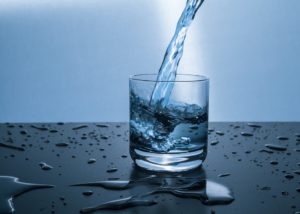
Prior to providing the answer to the critical question of how much water a family or individual should store to be prepared for natural disasters, we must consider and understand a critical truth about disaster preparedness. The truth is, there is no such thing as a perfect preparedness solution.
The common thread which intertwines the many different types of natural or man-made disasters is the inability to plan for every possible situation. Instead of toiling over an imperfect plan, the goal for every family or individual should be to be as prepared as possible based upon the type of disaster most likely to occur in the geographic region in which they live.
We can never know when a disastrous situation may occur. The following information assumes that disaster survivors can remain in the home.
How important is water to a disaster plan and the survival of humans in general? Most survival and medical experts agree that the average person can survive about three days without water, making water an absolute must-have in any preparedness plan. According to the U.S. Food and Nutrition Board (FNB), on average men should drink about 125 ounces per day, women 91 ounces per day, and children depending on age as much as 12 ounces per day; not including water required for cooking and bathing estimated at one gallon or 128 ounces per day for a family of five.
For this article we will use the three-day, FNB daily average water intake: one gallon for cooking and bathing for a five-person family to determine the approximate amount of water needed suggested for an emergency preparedness kit.
Because of the complexity associated with trying to predict the recovery time associated with different disasters, it is wiser—for preparedness purposes—for families or individuals to look at the amount of water required to survive over a given period. For example, during Hurricane Katrina many family homes were without water for up to 30 days, and during Hurricane Maria in 2017 water was not fully restored to the island for nearly 6 months.
In the immediate aftermath of a disaster, the focus of local police, fire, emergency medical technicians (EMT) and search-and-rescue personnel will be on life-saving and life-sustaining operations. he duration of these operations is directly correlated to the magnitude of the devastation. The general rule of thumb is to have a minimum of a three-day supply of water. I would suggest where a family of five would require an estimated 1140 ounces or roughly 9 gallons of water for drinking, cooking, and bathing for a 3-day period. The same family of five would require 1900 ounces for 5-days, 3800 ounces, and 11400 ounces for 30 days.
The chart below illustrates the water need for a family extending out to 30-days:

On the surface the number when represented as ounces appear both large and expensive. But nothing could be further from the truth. The average cost of gallon of water ranges from $1.50 to $3.
With that in mind, consider for an investment of $27 you can purchase the nine gallons of water required for a family of five for three days; $45 dollars will cover the 15 gallons needed for five days, $90 dollars will cover the 30 gallons needed for 10 days; and $270 will cover the 90 gallons needed for 30 days.
If there is advance notice of pending disaster filling you tub with water could be critical as experts estimate the average told will hold about 65 gallons. Using the above as baseline for preparedness families and individual can have the life sustaining waters required following naturel or man-made disaster.
This article assumes the family will be able to remain in home, however, it is critical that each family consider the possibility of having to evacuate the home immediately, in a few hours or a few days. Storing water for survival purposes with no plan designed to remove as much, if not all the water as quickly as possible is a flawed plan. The method of evacuation will play a significant role in the water removal strategy. A family with no transportation must consider the distance to the destination, the terrain traveled, how much water they can carry based on the tool used i.e. a wagon or dolly. If a family is traveling via a vehicle, they should consider the number of passengers, supplies and water the vehicle can carry.
A final note, the storage of water is critical, however finances and storage space are typically limited which means that despite our best preparations there is the possibility of running out of water in a prolonged event. Because of this I would suggest that each family learn a few methods of purifying water it could prove to be a lifesaving skill under the right circumstances.